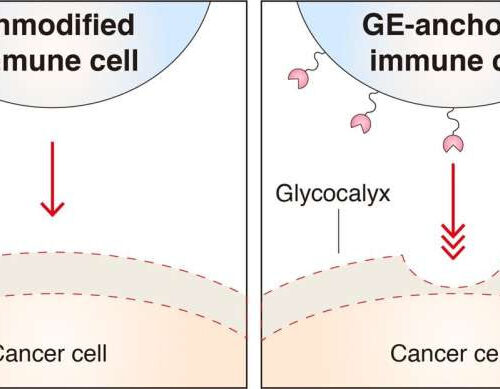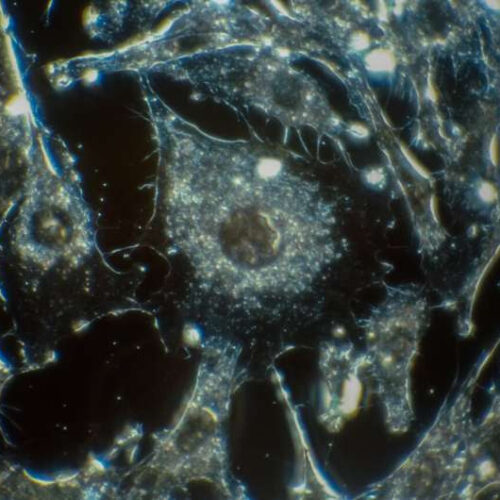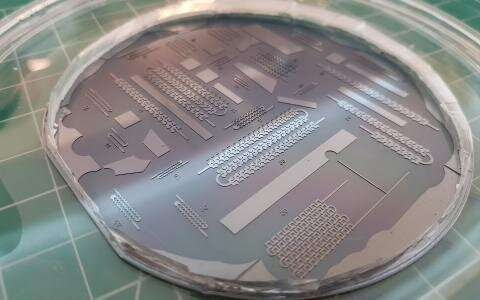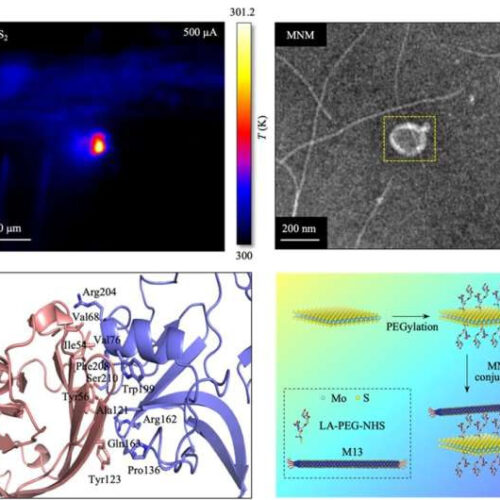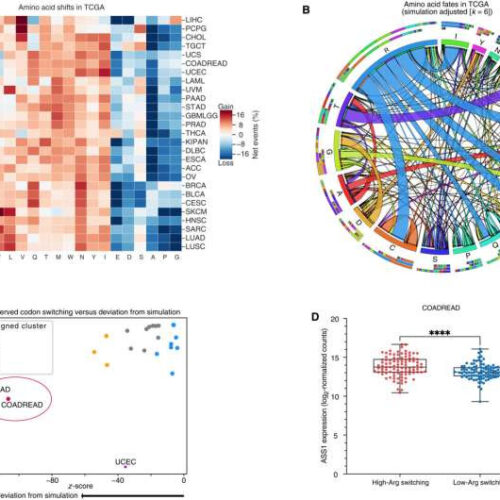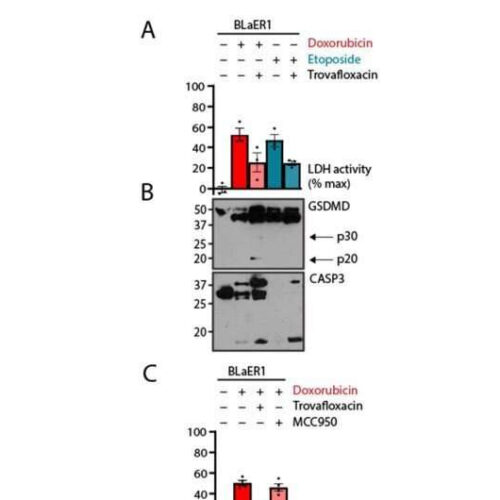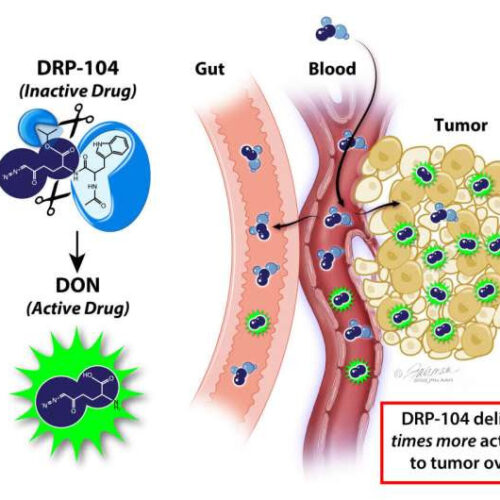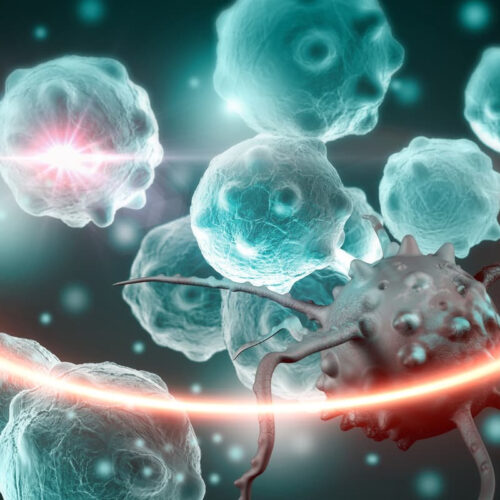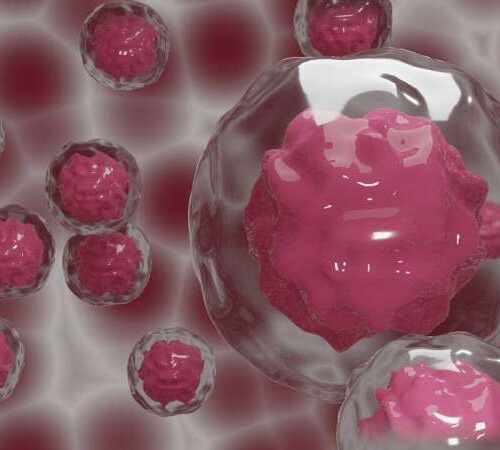by American Society for Biochemistry and Molecular Biology Researchers engineered immune cells (NK-92) to anchor glycocalyx-editing (GE) enzymes on the surface. The modified immune cells were able to break through the glycocalyx armor of cancer cells. Credit: Sangwoo Park, Cornell University One of the ways that cancer cells hide from the body’s immune system is...
Tag: <span>cancer cells</span>
New details on how immune cells ‘see’ and respond to mutations in cancer cells may lead to more targeted and effective immunotherapy
UNIVERSITY OF CALIFORNIA – LOS ANGELES HEALTH SCIENCES For the first time, a research team has identified and analyzed the steps by which immune cells “see” and respond to cancer cells, providing insights into reasons some treatments may be effective for certain patients but not others. The UCLA Jonsson Comprehensive Cancer Center scientists leading the research believe their findings will lead...
Scientists transform cancer cells into weapons against cancer
by Christopher Vaughan, Stanford University Medical Center Credit: Unsplash/CC0 Public Domain Some cities fight gangs with ex-members who educate kids and starve gangs of new recruits. Stanford Medicine researchers have done something similar with cancer—altering cancer cells so that they teach the body’s immune system to fight the very cancer the cells came from. “This approach could...
New device can detect cancer cells without invasive and expensive surgery
by University of Technology, Sydney The Static Droplet Microfluidic device. Credit: Dr. Majid Warkiani Researchers from the University of Technology Sydney have developed a new device that can detect and analyze cancer cells from blood samples, enabling doctors to avoid invasive biopsy surgeries, and to monitor treatment progress. Cancer is a leading cause of illness and...
Researchers develop a novel 2D material that uses a virus to kill cancer cells
by Singapore University of Technology and Design Top left, Thermograph of the sample upon application of electrical signal; Top right, Transmission electron microscopy image of MNM; Bottom left, Binding interface of the virus-cancer cell protein structure; Bottom right, Schematic diagram of the composition and process used to construct the MNM. Credit: Pharmaceutics (2022). DOI: 10.3390/pharmaceutics15010106 Electro-thermal therapy, which...
Team identifies a nutrient that cancer cells crave
by Rockefeller University Arginine codons and residues are frequently lost and are associated with an increase in ASS1 expression. (A) Heatmap depicting codons gained (red) and lost (blue) across the TCGA. Gains and losses are normalized to the total number of missense and silent mutation events per sample for each cancer type. (B) Qualitative chord diagram...
How cancer cells die: Scientists explore new pathways of pyroptosis, killer kin of apoptosis
by Delthia Ricks, Medical Xpress Lymphoid BLaER1 cells undergo PANX1-dominant lysis. (A to C) BLaER1 cells were treated with topoisomerase poisons doxorubicin (2 μM) or etoposide (50 μM) for 24 hours. Concurrent treatment with PANX1 inhibitor trovafloxacin (20 μM) or NLRP3 inflammasome inhibitor MCC950 (10 μM) were as indicated. In (A and C), quantification of...
Researchers design ‘prodrug’ that targets cancer cells’ big appetite for glutamine, leaving healthy cells unharmed
by Johns Hopkins University School of Medicine Schematic showing DRP-104’s bio-activation to DON in tumor and bio-inactivation to an inert metabolite in GI tissues. Credit: Jennifer E. Fairman, CMI, FAMI, Department of Art as Applied to Medicine Johns Hopkins Medicine researchers have revamped an anti-cancer drug to better target cancer cells and leave healthy tissues...
“Electrical language” of cancer cells may spill secrets of tumor growth
By Nick Lavars November 14, 2022 Scientists have discovered a new type of electrical activity in cancer cells Depositphotos By using machine learning and cutting-edge microscopes, scientists have uncovered what they believe to be a new form of communication between cancer cells. Described as a “type of electrical language,” the discovery may be key to...
Cancer cells adopt hitherto unknown state to facilitate metastasis
by Susann Huster, Leipzig University Credit: Pixabay/CC0 Public Domain The ancient Egyptians, as described in the Ebers Papyrus, already knew that palpation—feeling for hardened lumps—can help diagnose breast cancer. Palpation is still an important element in early screening for breast cancer. On the other hand, measurements on individual cancer cells show that they are softer...

